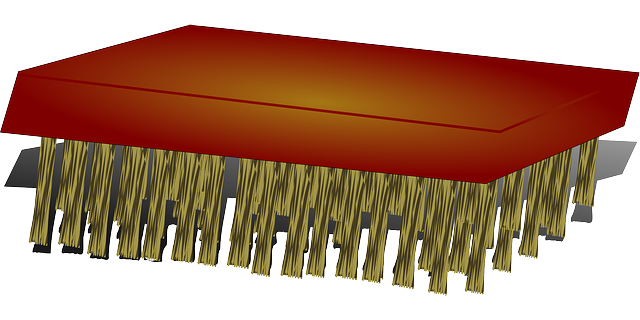اللغة القبطية
| Coptic | |
|---|---|
| ϯⲙⲉⲧⲣⲉⲙⲛ̀ⲭⲏⲙⲓ ~ ⲧⲙⲛ̄ⲧⲣⲙ̄ⲛ̄ⲕⲏⲙⲉ | |
| موطنها | Egypt |
| العرق | Copts |
| الحقبة | 2nd–17th century; survives as the liturgical language of the Coptic Orthodox Church of Alexandria and spoken colloquially by some Copts |
عائلة اللغات |
الأفرو-آسيوية
|
الصيغ المبكرة |
Archaic Egyptian
|
نظام الكتابة |
Coptic alphabet |
| أكواد اللغات | |
| ISO 639-2 | cop |
| ISO 639-3 | cop |
| Glottolog | copt1239 |
|
|
هذه الموضوعة تحتوي على نص قبطي. بدون دعم العرض المناصب، فقد ترى علامات استفهام، مربعات، أورموز أخرى بدلاً من حروف قبطية. |
نطقب:Culture of Egypt
|
اللغة القبطية هى أخر صور اللغة المصرية القديمة وخطت بحروف مشتقة من الأبجدية اليونانية القديمة والكتابة الديموطيقية وتتكون من 32 حرف وبلغت اللغة القبطية ذروة المجد ما بين القرن الرابع الميلادى والقرن العاشر الميلادى وبعد الغزوالعربى لمصر أمر الحكام العرب بعدم أستعمالها في الدواوين وقد تطرف بعض الحكام لدرجة منعهم للشعب المصرى من التحدث باللغة القبطية في المنازل وكان الحاكم بأمر الله الخليفة الفاطمى يامر ببتر لسان جميع مصرى يسمعه الناس يتحدث باللغة القبطية ولكن ظلت اللغة القبطية مستعملة في دلتا مصر حتى القرن الحادى عشر ثم حلت محلها اللغة العربية كما انها أستمرت لغة التخاطب الرسمية بين المصريين في الصعيد حتى القرن السادس عشر حتى بدأت في الأنحسار تدريجيا أيام حكم العثمانيين وكانت أسيوط أخر الأنطقيم التى تحدثت اللغة القبطية في منتصف القرن الثامن عشر ومازالت اللغة القبطية مستخدمة في الكنائس كلغة العبادة كما أنتقلت منها ألاف الحدثات إلى اللغة العربية العامية التى مازالت مستخدمة حتى الان في مصر
Islamic period
الصوتيات
Vowels
There are some differences of opinion among Coptic language scholars on the correct phonetic interpretation of the writing system of Coptic. Differences centre on how to interpret the pairs of letters ε/η and ο/ω. In Greek spelling, the first member of each pair is a short closed vowel /e, o/, and the second member is a long open vowel /ɛː, ɔː/. In some interpretations of Coptic phonology, it is assumed that the length difference is primary, with ε/η e/eː and ο/ω is o/oː. Other scholars argue for a different analysis in which ε/η and ο/ω are interpreted as e/ɛ and o/ɔ.
These two charts show the two theories of Coptic vowel phonology:
| Front | Central | Back | |
|---|---|---|---|
| Close | iː | uː | |
| Close-mid | eː e | oː o | |
| Mid | ə | ||
| Open | a |
| Front | Central | Back | |
|---|---|---|---|
| Close | iː | uː | |
| Close-mid | e | o | |
| Mid | ɛ | ə | ɔ |
| Open | a |
Dialects vary in their realization. The difference between [o] and [u] seems to be allophonic. Evidence is not sufficient to demonstrate that these are distinct vowels, and if they are, the difference has a very low functional load. For dialects that use orthographic <ει> for a single vowel, there appears to be no phonetic difference from <ι>.
Double orthographic vowels are presumed here to be long, as that makes the morphology more straightforward. (Another common interpretation is that these represented glottal stop.)
Akhmimic is conservative, close to what is reconstructed for Old Coptic.
| Front | Back | |
|---|---|---|
| Close | i, iː <ι~ει, ιει> |
u~o, uː~oː <ου~ω, ουου> |
| Mid | e <η> | |
| ɛ, ɛː <ε, εε> | ɔː <οο~ωω> | |
| Open | a, aː <α, αα> | |
There is no length distinction in final stressed position, but only those vowels that occur long appear there: <(ε)ι, ε, α, ο~ω, ου>.
In Sahidic, the letter ε was used for short /e/ before back fricatives, and also for unstressed schwa. It's possible there was also a distinction between short /ɛ/ and /a/, but if so the functional load was extremely low.
| Front | Back | |
|---|---|---|
| Close | i <ι~ει> |
u~o, oː <ου~ω, ωω> |
| Mid | e, eː <η~ε, ηη> | |
| <ε>?, ɛː <εε> | ɔ, ɔː <ο, οο> | |
| Open | a, aː <α, αα> | |
Again, length is neutralized in final stressed position: <(ε)ι, η, ε, α, ο, ω~ου>.
Bohairic did not have long vowels. /i/ was only written <ι>. As above, it's possible that /u/ and /o/ were distinct vowels rather than just allophones.
| Front | Back | |
|---|---|---|
| Close | i <ι> |
u~o <ου~ω> |
| Mid | e <η> | |
| ɛ <ε> | ɔ <ο> | |
| Open | a <α> | |
In Late Coptic (that is, Late Bohairic), the vowels were reduced to those found in Egyptian Arabic, /a, i, u/. <ω, ο> became /u/, <ε> became /a/, and <η> became either /i/ or /a/. It's difficult to explain <η>. However, it generally became /a/ in stressed monosyllables, /i/ in unstressed monosyllables, and in polysyllables, /a/ when followed by /i/, and /i/ when not.
There were no doubled orthographic vowels in Mesokemic. Some representative correspondences with Sahidic are,
| Sahidic stressed vowels | α | αα, εε | η | ο | ω | ωω |
|---|---|---|---|---|---|---|
| Mesokemic equivalent | ε | η | η | α | ο | ω |
It's not clear if these correspondences reflect distinct pronunciations in Mesokemic, or if they're an imitation of the long Greek vowels <η, ω>.
Consonants
As with the vowels, there are differences of opinion over the correct interpretation of the Coptic consonant letters, particular the letters ϫ and Ϭ. ϫ is transcribed as 〈j〉 in many older Coptic sources and Ϭ as 〈ɡ〉 or 〈č〉. Lambdin (1983) notes that the current conventional pronunciations are different from the probable ancient pronunciations: Sahidic ϫ was probably pronounced [tʲ] and Ϭ was probably pronounced [kʲ]. Reintges (2004, p. 22) suggests that ϫ was pronounced [tʃ].
The following chart shows the consonants that are represented in Sahidic Coptic orthography. Consonants that are rare or found primarily in Greek loanwords are shown in parentheses:
| Labial | Alveolar | alveolar | Velar | Glottal | |||||
|---|---|---|---|---|---|---|---|---|---|
| plain | den. | plain | pal. | plain | pal. | ||||
| Nasal | m | n | ŋ 〈νγ〉 | ||||||
| Stop | voiceless | p | t | tʲ 〈ϫ〉 | k | kʲ 〈Ϭ〉 | |||
| voiced | (d)? | (ɡ)? | |||||||
| Fricative | voiceless | f | s | ʃ | h | ||||
| voiced | β | (z)? | |||||||
| Approximant | w 〈ⲟⲩ〉 | l | j 〈(ε)ι〉 | ||||||
| Trill | r | ||||||||
Beside being found in Greek loanwords, the letters 〈φ, θ, χ〉 were used in native words for a sequence of /p, t, k/ plus /h/, as in ⲑⲉ = ⲧ-ϩⲉ "the-way" (f.sg.) and ⲫⲟϥ = ⲡ-ϩⲟϥ "the-snake" (m.sg). The letters did not have this use in Bohairic, which used them for single sounds.
It is possible that in addition there was a glottal stop, ʔ, that was not consistently written. Coptic does not seem to have had a glottal stop at the beginning of orthographically vowel-initial words. It's possible that vowels written double were an attempt to indicate glottal stop, rather than a long vowel, in the middle of a word. However, there is little evidence for this (e.g., Arabic loans with short vowels and glottal stop are not written with double vowels in Coptic, and Coptic words with double orthographic vowels are transcribed with long vowels rather than hamza in Arabic.)
| Labial | Alveolar |
Palatal (approx.) |
Velar | Glottal | ||
|---|---|---|---|---|---|---|
| Nasal | m | n | ||||
| Stop | Aspirated | pʰ 〈ⲫ〉 | tʰ 〈ⲑ〉 | cʰ 〈Ϭ〉 | kʰ 〈ⲭ〉 | |
| Tenuis | p | t | c 〈ϫ〉 | k | ||
| Fricative | voiceless | f 〈ϥ〉 | s 〈ⲥ〉 | ʃ 〈ϣ〉 | x 〈Ϧ〉 | h 〈ϩ〉 |
| voiced |
β 〈β〉 (final [b]) |
|||||
| Approximant | w 〈ⲟⲩ〉 | l | j 〈ι〉 | |||
| Trill | r | |||||
In Late Coptic (ca. 14th century), Bohairic sounds that did not occur in Egyptian Arabic were lost. A possible shift from a tenuis-aspirate distinction to voiced-tenuis is only attested from the alveolars, the only place that Arabic has such a contrast.
| Original pronunciation |
Late pronunciation |
|---|---|
| β | w (final [b]) |
| p | b |
| pʰ | b ~ f |
| t | d (final [t]) |
| tʰ | t |
| c | ɟ |
| cʰ | ʃ |
| k | k |
| kʰ | k |
Pronouns
This section requires expansion. (June 2008)
|
Coptic pronouns are of two kinds, dependent and independent. Independent pronouns are used when the pronoun is acting as the subject of a sentence, as the object of a verb, or with a preposition. Dependent pronouns are a series of prefixes and suffixes that can attach to verbs and other nouns. Coptic verbs can therefore be said to inflect for the person, number and gender of the subject and the object: a pronominal prefix marks the subject, and a pronominal suffix marks the object, e.g. "I I'have'it the ball." When (as in this case) the subject is a pronoun, it normally isn't also expressed independently, unless for emphasis.
As in other Afroasiatic languages, gender of pronouns differ only in the second and third person singular. The following table shows the pronouns of the Sahidian dialect:
| Independent | Proclitic | As suffix | |||
|---|---|---|---|---|---|
| Stressed | Unstressed | ||||
| Singular | 1. | anok | anək- | ti- | =i |
| 2. m. | əntʰok | əntek- | ək- | =k | |
| 2. f. | əntʰo | ənte- | te-, tr- | =∅, =e, =r(e), =te | |
| 3. m. | əntʰof | əf- | =f | ||
| 3. f. | əntʰos | əs- | =s | ||
| Plural | 1. | anon | an- | ten- | =n |
| 2. | əntʰōten | ənten- | teten- | =ten, =teten | |
| 3. | əntʰōou | se- | =ou | ||
Adjectives
Most Coptic adjectives are actually nouns that have the attributive particle n to make them adjectival. In all stages of Egyptian, this morpheme is also used to express the genitive; for example, the Bohairic word for 'Egyptian', ⲣⲉⲙ̀ⲛⲭⲏⲙⲓ /remənkʰeːmə/, is a combination of the nominal prefix rem- (the reduced form of ⲣⲱⲙⲓ rōmi 'man'), followed by the genitive morpheme ən ('of') and finally the word for Egypt, kʰēmi.
Verbs
This section requires expansion. (June 2008)
|
Verbal grade system
Coptic, like Ancient Egyptian and Semitic languages, has root-and-pattern or templatic morphology, and the basic meaning of a verb is contained in a root and various derived forms of root are obtained by varying the vowel pattern. For example, the root for 'build' is kt. It has four derived forms: kɔt (the absolute state grade); ket- (the nominal state grade), kot= (the pronominal state grade), and kɛt (the stative grade). (The nominal state grade is also called the construct state in some grammars of Coptic.)
The absolute, nominal, and pronominal state grades are used in different syntactic contexts. The absolute state grade of a transitive verb is used before a direct object with the accusative preposition /ən, əm/, and the nominal state grade is used before a direct object with no case-marking. The pronominal state grade is used before a pronominal direct object enclitic. In addition, many verbs also have a neutral state grade, used to express a state resulting from the action of the verb. Compare the following forms:
Absolute state grade
- نطقب:Fs interlinear
Nominal state grade
- نطقب:Fs interlinear
Pronominal state grade
- نطقب:Fs interlinear
For most transitive verbs, both absolute and nominal state grade verbs are available for non-pronominal objects. However, there is one important restriction, known as Jernstedt's rule (or the Stern-Jernstedt rule) (Jernstedt 1927): present-tense sentences cannot be used in the nominal state grade. Thus sentences in the present tense always show a pattern like the first example above (absolute state), never the second pattern (nominal state).
In general, the four grades of Coptic verb are not predictable from the root, and are listed in the lexicon for each verb. The following chart shows some typical patterns of correspondence:
| Gloss | Absolute state | Nominal state | Pronominal state | Neutral state | ||||
|---|---|---|---|---|---|---|---|---|
| Coptic | IPA | Coptic | IPA | Coptic | IPA | Coptic | IPA | |
| spread | ⲡⲱⲣϣ̀ | poːrəʃ | ⲡⲣ̀ϣ | pərʃ | ⲡⲱⲣϣ | poːrʃ | ⲡⲟⲣϣ̀ | poʔrəʃ |
| dig | ϣⲓⲕⲉ | ʃiːkə | ϣⲉⲕⲧ | ʃekt | ϣⲁⲕⲧ | ʃakt | ϣⲟⲕⲉ | ʃoʔkə |
| comfort | ⲥⲟⲗⲥⲗ̀ | solsəl | ⲥⲗ̀ⲥⲗ̀ | səlsəl | ⲥⲗ̀ⲥⲱⲗ | səlsoːl | ⲥⲗ̀ⲥⲱⲗ | səlsoːl |
| roll | ⲥⲕⲟⲣⲕⲣ̀ | skorkər | ⲥⲕⲣ̀ⲕⲣ̀ | skərkər | ⲥⲕⲣ̀ⲕⲱⲣ | skərkoːr | ⲥⲕⲣ̀ⲕⲱⲣ | skərkoːr |
| build | ⲕⲱⲧ | koːt | ⲕⲉⲧ | ket | ⲕⲟⲧ | kot | ⲕⲏⲧ | keːt |
It is hazardous to make firm generalizations about the relationships between these grade forms, but the nominal state is usually shorter than the corresponding absolute and neutral forms. Absolute and neutral state forms are usually bisyllabic or contain a long vowel; the corresponding nominal state forms are monosyllabic or have short vowels.
Tense/aspect/mood inflection
Coptic has a very large number of distinct tense-aspect-mood categories, expressed by particles which are either before the verb or before the subject. The future I /na/ is a preverbal particle and follows the subject:
- نطقب:Fs interlinear
In contrast, the perfective /a/ is a pre-subject particle:
- نطقب:Fs interlinear
There is some variation in the labels for the tense/aspect/mood categories. The chart below shows the labels from Reintges (2004), Lambdin (1983), Plumley (1948). (Where they agree, only one label is shown.) Each form lists the morphology found with a nonpronominal subject and a third person singular masculine pronominal subject('he'):
| Tense name (Reintges) | Tense name (Lambdin) | Tense name (Plumley) | Nominal subject | 3rd masc sg pronominal subject | ||
|---|---|---|---|---|---|---|
| First Present | Present I | ø NP | - | f- | ϥ- | |
| Second Present | ere NP | ⲉⲣⲉ | ef- | ⲉϥ- | ||
| Relative of First Present | etere NP | ⲉⲧⲉⲣⲉ | etəf- | ⲉⲧϥ̀- | ||
| Circumstantial | ere NP | ⲉⲣⲉ | ef- | ⲉϥ- | ||
| Preterite Present | Imperfect | Imperfect | nere NP | ⲛⲉⲣⲉ | nef- | ⲛⲉϥ- |
| Preterite Past | nea NP | ⲛⲉⲁ | neaf- | ⲛⲉⲁϥ- | ||
| Future I | NP na- | ⲛⲁ- | fna- | ϥⲛⲁ- | ||
| Future II | ere NP na- | ⲉⲣⲉ ⲛⲁ- | efna- | ⲉϥⲛⲁ- | ||
| Future III | ere NP | ⲉⲣⲉ | efe- | ⲉϥⲉ- | ||
| Negative Future III | Negative Future III | ənne NP | ⲛ̀ⲛⲉ | ənnef- | ⲛ̀ⲛⲉϥ- | |
| Imperfect of Future | Future Imperfect | nere NP na- | ⲛⲉⲣⲉ ⲛⲁ- | nefna- | ⲛⲉϥⲛⲁ- | |
| Perfect I | a NP | ⲁ | af- | ⲁϥ- | ||
| Negative Perfect I | əmpe NP | ⲙ̀ⲡⲉ | əmpef- | ⲙ̀ⲡⲉϥ- | ||
| Perfect II | ənta NP | ⲛ̀ⲧⲉ | əntaf- | ⲛ̀ⲧⲉϥ- | ||
| Habitual I | ʃare NP | ϣⲁⲣⲉ | ʃaf- | ϣⲁϥ- | ||
| Habitual II | eʃare NP | ⲉϣⲁⲣⲉ | eʃaf- | ⲉϣⲁϥ- | ||
| Negative Habitual | mere NP | ⲙⲉⲣⲉ | mef- | ⲙⲉϥ- | ||
| Jussive | Injunctive | Optative | mare NP | ⲙⲁⲣⲉ | maref- | ⲙⲁⲣⲉϥ- |
| Conditional | erʃan NP | ⲉⲣϣⲁⲛ | efʃan- | ⲉϥϣⲁⲛ- | ||
| Conjunctive | ənte NP | ⲛ̀ⲧⲉ | nəf- | ⲛϥ̀- | ||
| Inferential | Future Conjunctive of Result | Future IV | tare NP | ⲧⲁⲣⲉ | taref- | ⲧⲁⲣⲉϥ- |
| Temporal | əntere NP | ⲛ̀ⲧⲉⲣⲉ | ənteref- | ⲛ̀ⲧⲉⲣⲉϥ- | ||
| Terminative | "Until" | "Unfulfilled action" | ʃante NP | ϣⲁⲛⲧⲉ | ʃantəf- | ϣⲁⲛⲧϥ̀- |
| "Not yet" | "Unfulfilled action" | əmpate NP | ⲙ̀ⲡⲁⲧⲉ | əmpatəf- | ⲙ̀ⲡⲁⲧϥ̀- | |
An approximate range of use for most of the tense/aspect/mood categories is shown in the following table:
| Tense name (Lambdin) | Approximate range of use |
|---|---|
| Present I | Present time in narrative (predicate focus) |
| Relative of Present I | Non-subject relative clause in present tense |
| Circumstantial | Background clauses; relative clauses with indefinite heads |
| Imperfect | Action in progress in the past |
| Future I | Simple future tense (predicate focus) |
| Future II | Simple future tense (adverbial focus) |
| Future III | Future tense conveyed as necessary, inevitable, or obligatory |
| Perfect I | Primary narrative tense (predicate focus) |
| Negative Perfect I | Negative of Perfect I |
| Perfect II | Primary narrative tense (adverbial focus); relative clause form of Perfect I |
| Habitual | Characteristic or habitual action |
| Negative Habitual | Negative of Habitual |
| Injunctive | Imperative for first and third persons ('let me', 'let him', etc.) |
| Conditional | Protasis (if-clause) of a conditional (if-then) statement |
| Conjunctive | Event shares the TAM of a preceding initial verb |
| Future Conjunctive of Result | Used in clauses that express a resultant action |
| Temporal | Past action in a subordinate temporal clause ("when NP V-ed, ...") |
Second tenses
An unusual feature of Coptic is the extensive use of a set of "second tenses", which are required in certain syntactic contexts. "Second tenses" are also called "relative tenses" in some work.
Prepositions
This section requires expansion. (June 2008)
|
Coptic has prepositions, rather than postpositions:
- نطقب:Interlinear
Pronominal objects of prepositions are indicated with enclitic pronouns:
- ero=k 'to you (m.sg)'
- na=n 'for us'
Many prepositions have different forms before the enclitic pronouns. Compare
- e p-tʲoi 'to the ship'
- ero=f 'to him'
Syntax
Sentential syntax
This section requires expansion. (June 2008)
|
Coptic typically shows subject–verb–object (SVO) word order, as in the following examples:
- نطقب:Fs interlinear
- نطقب:Fs interlinear
- نطقب:Fs interlinear
The verbs in these sentences are in the absolute state grade, which requires that its direct object be introduced with the preposition /ən, əm/. This preposition functions like accusative case.
There is also an alternative nominal state grade of the verb in which the direct object of the verb follows with no preposition:
- نطقب:Fs interlinear
Dialects
There is little written evidence of dialectal differences in the pre-Coptic phases of the Egyptian language due to the centralized nature of the political and cultural institutions of ancient Egyptian society. However, literary Old and Middle (Classical) Egyptian represent the spoken dialect of Lower Egypt around the city of Memphis, the capital of Egypt in the Old Kingdom. Later Egyptian is more representative of the dialects spoken in Upper Egypt, especially around the area of Thebes as it became the cultural and religious center of the New Kingdom.
Coptic more obviously displays a number of regional dialects that were in use from the coast of the Mediterranean Sea in northern Egypt, south into Nubia, and in the western oases. However, while many of these dialects reflect actual regional linguistic (namely phonological and some lexical) variation, they mostly reflect localized orthographic traditions with very little grammatical differences.
Upper Egypt
Sahidic
Sahidic (also known as Thebaic) is the dialect in which most known Coptic texts are written, and was the leading dialect in the pre-Islamic period. It is thought to have originally been a regional dialect from the area around Hermopolis (Coptic Ϣⲙⲟⲩⲛⲉⲓⲛ Shmounein). Around 300 it began to be written in literary form, including translations of major portions of the Bible (see Coptic versions of the Bible). By the 6th century, a standardized spelling had been attained throughout Egypt. Almost all native authors wrote in this dialect of Coptic. Sahidic was, beginning in the 9th century, challenged by Bohairic, but is attested as late as the 14th.
While texts in other Coptic dialects are primarily translations of Greek literary and religious texts, Sahidic is the only dialect with a considerable body of original literature and non-literary texts. Because Sahidic shares most of its features with other dialects of Coptic with few peculiarities specific to itself, and has an extensive corpus of known texts, it is generally the dialect studied by learners of Coptic, particularly by scholars outside of the Coptic Church.
Akhmimic
Akhmimic was the dialect of the area around the town of Akhmim (Greek Panopolis). It flourished during the fourth and fifth centuries, after which no writings are attested. Akhmimic is phonologically the most archaic of the Coptic dialects. One characteristic feature is the retention of the phoneme /x/, which is realized as /ʃ/ in most other dialects. Similarly, it uses an exceptionally conservative writing system strikingly similar to Old Coptic.
Lycopolitan
Lycopolitan (also known as Subakhmimic and Assiutic) is a dialect closely related to Akhmimic in terms of when and where it was attested, but manuscripts written in Lycopolitan tend to be from the area of Asyut. The main differences between the two dialects seem to be graphic in nature. The Lycopolitan variety was used extensively for translations of Gnostic and Manichaean works, including the texts of the Nag Hammadi library.
Lower Egypt
Bohairic
The Bohairic (also known as Memphitic) dialect originated in the western Nile Delta. The earliest Bohairic manuscripts date to the 4th century, but most texts come from the 9th century and later; this may be due to poor preservation conditions for texts in the humid regions of northern Egypt. It shows several conservative features in lexicon and phonology not found in other dialects. Bohairic is the dialect used today as the liturgical language of the Coptic Orthodox Church, replacing Sahidic some time in the eleventh century. In contemporary liturgical use, there are two traditions of pronunciation, arising from successive reforms in the 19th and 20th centuries (see Coptic pronunciation reform). Modern revitalization efforts are based on this dialect.
Fayyumic
Fayyumic (also written as Faiyumic; in older works it is often called Bashmuric) was spoken primarily in the Faiyum west of the Nile Valley. It is attested from the 3rd to the 10th centuries. It is most notable for writing ⲗ (which corresponds to /l/), where other dialects generally use ⲣ /r/ (probably corresponding to a flap [ɾ]). In earlier stages of Egyptian, the liquids were not distinguished in writing until the New Kingdom, when Late Egyptian became the administrative language. Late Egyptian orthography utilized a grapheme that combined the graphemes for /r/ and /n/ in order to express /l/. Demotic for its part indicated /l/ using a diacritic variety of /r/.
Oxyrhynchite
Oxyrhynchite (also known as Mesokemic or [confusingly] Middle Egyptian) is the dialect of Oxyrhynchus and surrounding areas. It shows similarities with Fayyumic and is attested in manuscripts from the fourth and fifth centuries.
Trivia
On 12 March 2019, the Coptic language was added to Google's virtual keyboard app, Gboard.
انظر أيضاً
- British Library Coptic Language Collection
- Coptic alphabet
- Coptic Orthodox Church of Alexandria
- Egyptian language
- Egyptian Arabic
- Nag Hammadi library
- List of Coptic place names
References
- ^ نطقب:Glottolog
- ^ Plumley 1948.
- ^ Greenberg 1962/1990
- ^ Lambdin 1983, pp. xii-ix.
- ^ Final only (Peust 1999:91).
- ^ 〈δ〉 is used for both original 〈τ〉 and 〈δ〉 in words of Greek origin, suggesting that it was used as an orthographic marker of Greek vocabulary and that [d] did not occur in Coptic (Peust 1999:89).
- ^ 〈γ〉 is used for both original 〈κ〉 and 〈γ〉 in words of Greek origin, suggesting that it was used as an orthographic marker of Greek vocabulary and that [ɡ] did not occur in Coptic (Peust 1999:89)
- ^ 〈ζ〉 is used for both original 〈ς〉 and 〈ζ〉 in words of Greek origin, suggesting that it was used as an orthographic marker of Greek vocabulary and that [z] did not occur in Coptic (Peust 1999:89)
- ^ [ɟ] is the local equivalent of Cairene [ɡ].
- ^ Lambdin 1983, p. 39.
- ^ Reintges 2010, p. 210.
- ^ Reintges 2004.
- ^ Lambdin 2003, pp. 30–31.
- ^ Reintges 2010, p. 211; Lambdin 1983, p. 39.
- ^ Reintges 2010, p. 208.
- ^ "The "Coptic" language reaches the Google Gboard keyboard". tech2.org. 12 March 2019.
Further reading
General studies
- Abel, Carl (1855). "On the Coptic Language". Transactions of the Philological Society (5).
- Emmel, Stephen. 1992. "Languages (Coptic)". In The Anchor Bible Dictionary, edited by David Noel Freedman. Vol. أربعة ofستة vols. New York: Doubleday. 180–188.
- Gessman, A. M. (1976). "The Birth of the Coptic Script". University of South Florida Language Quarterly 14. 2–3.
- Gignac, Francis Thomas. 1991. "Old Coptic". In The Coptic Encyclopedia, edited by Aziz Suryal Atiya. Vol.ثمانية ofثمانية vols. New York and Toronto: Macmillan Publishing Company and Collier Macmillan Canada. 169–188.
- Kasser, Radolphe. 1991. "Dialects". In The Coptic Encyclopedia, edited by Aziz Suryal Atiya. Vol.ثمانية ofثمانية vols. New York and Toronto: Macmillan Publishing Company and Collier Macmillan Canada. 87–96.
- Wolfgang Kosack. Lehrbuch des Koptischen.Teil I:Koptische Grammatik.Teil II:Koptische Lesestücke, Graz 1974.
- Loprieno, Antonio. 1995. Ancient Egyptian: A Linguistic Introduction. Cambridge: Cambridge University Press.
- Polotsky, Hans Jakob. 1971. "Coptic". In Afroasiatic: A Survey, edited by Carleton Taylor Hodge. (Jana Linguarum: Series Practica; 163). 's Gravenhage and Paris: Mouton. 67–79.
Grammars and grammatical studies
- Chaîne, Marius. 1933. Éléments de grammaire dialectale copte: bohairique, sahidique, achmimique, fayoumique. Paris: Paul Geuthner.
- Eberle, Andrea, & Regine Schulz. 2004. Koptisch – Ein Leitfaden durch das Saïdische. LINCOM Languages of the World/Materials 07. Munich: LINCOM Europa.
- Jernstedt, Peter V. 1927. Das koptische Präsens und die Anknüpfungsarten des näheren Objekts. 'Comptes rendus de l'Academice des Sciences de l'Union République Soviétique Socialistes. 2, 69–74.
- Lambdin, Thomas Oden (1983). Introduction to Sahidic Coptic. Macon: Mercer University Press.
- Layton, Bentley. 2000. A Coptic Grammar (Sahidic Dialect): With a Chrestomathy and Glossary. (Porta linguarum orientalium; N.S., 20). Wiesbaden: Harrassowitz.
- Layton, Bentley. 2007. Coptic in 20 Lessons: Introduction to Sahidic Coptic with Exercises and Vocabularies. Peeters Publishers, ISBN 90-429-1810-1.
- Mallon, Alexis. 1956. Grammaire copte: bibliographie, chrestomathie et vocabulaire. 4th edition. Beyrouth.
- Mattar, Nabil. 1990. A Study in Bohairic Coptic. Pasadena: Hope Publishing House.
- Plumley, John Martin (1948). . London: Home & Van Thal.
- Polotsky, Hans Jakob. 1987. Grundlagen des koptischen Satzbaus. American Studies in Papyrology 28. Decatur, Ga.: Scholars Press.
- Reintges, Chris H. (2004). Coptic Egyptian (Sahidic dialect): a learner's grammar. Cologne: Rüdiger Köppe Verlag. ISBN .
- Reintges, Chris H. (2010). "Coordination, converbs, and clause-chaining in Coptic Egyptian typology". In Bril, Isabelle (ed.). Clause linking and clause hierarchy. Studies in Language Companion Series. 128. Amsterdam: John Benjamins. ISBN .
- Shisha-Halevy, Ariel. 1988. Coptic Grammatical Chrestomathy: a course for academic and private study. Orientalia lovaniensia analecta 30. Leuven: Peeters.
- Shisha-Halevy, Ariel. 1986. Coptic Grammatical Categories: Structural Studies in the Syntax of Shenoutean Sahidic. Analecta Orientalia 53. Roma: Pontificium Institutum Biblicum. ISBN 88-7653-255-2.
- Shisha-Halevy, Ariel. 2007. Topics in Coptic Syntax: Structural Studies in the Bohairic Dialect. Orientalia Lovaniensia Analecta 160. Leuven – Paris – Dudley, MA: Peeters. ISBN 978-90-429-1875-7.
- Tattam, Henry, (London 1863)
- Till, Walter C. 1994. Koptische Dialektgrammatik. Berlin: Walter De Gruyter.
- Vergote, Jozef. 1973–1983. Grammaire copte. Leuven: Peeters.
- Younan, Sameh. 2005. So, you want to learn Coptic? A guide to Bohairic Grammar. Sydney: St.Mary, St.Bakhomious and St.Shenouda Coptic Orthodox Church.
Dictionaries
- Černý, Jaroslav. 1976. Coptic Etymological Dictionary. Cambridge and New York: Cambridge University Press.
- Crum, Walter Ewing. 1939. . Oxford: Clarendon Press. Reprinted by Sandpiper Books Ltd, London & Powells Books, Chicago, 2000.
- Wolfgang Kosack: Koptisches Handlexikon des Bohairischen. Koptisch – Deutsch – Arabisch. Verlag Christoph Brunner, Basel 2013, ISBN 978-3-9524018-9-7.
- Vycichl, Werner. 1983. Dictionnaire étymologique de la langue copte. Leuven: Éditions Peeters.
- Westendorf, Wolfhart. 1965/1977. Koptisches Handwörterbuch. Heidelberg: Carl Winter.
Phonology
- Depuydt, Leo. 1993. “On Coptic Sounds,” Orientalia 62 (new series): 338-75.
- Greenberg, Joseph H (originally published 1962). “The interpretation of the Coptic vowel system,” On Language: Selected Writings of Joseph H. Greenberg, eds., K Denning & S Kemmer. Stanford: Stanford University Press, 1990: 428–38.
- Grossman, Eitan and Martin Haspelmath. 2015. “The Leipzig-Jerusalem Transliteration of Coptic,” Egyptian-Coptic Linguistics in Typological Perspective, eds., Eitan Grossman, Martin Haspelmath & Tonio Sebastian Richter. Berlin/Munich/Boston: Walter de Gruyter. 145-56.
- Loprieno, Antonio. 1997. “Egyptian and Coptic Phonology,” Phonologies of Asia and Africa (Including the Caucasus), vol. 1, ed., Alan S. Kaye. Winona Lake: Eisenbrauns. 431–60.
- Peust, Carsten. 1999. . (Monographien zur ägyptischen Sprache; 2). Göttingen: Peust & Gutschmidt.
Bibliographies
- Kammerer, Winifred (compiler), A Coptic Bibliography, Ann Arbor: University of Michigan Press, 1950. (Reprint New York: Kraus Reprint Co., 1969)
- Wolfgang Kosack: Der koptische Heiligenkalender. Deutsch – Koptisch – Arabisch nach den besten Quellen neu bearbeitet und vollständig herausgegeben mit Index Sanctorum koptischer Heiliger, Index der Namen auf Koptisch, Koptische Patriarchenliste, Geografische Liste. Christoph Brunner, Berlin 2012, ISBN 978-3-9524018-4-2.
- Wolfgang Kosack: Schenute von Atripe De judicio finale. Papyruskodex 63000.IV im Museo Egizio di Torino. Einleitung, Textbearbeitung und Übersetzung herausgegeben von Wolfgang Kosack. Christoph Brunner, Berlin 2013, ISBN 978-3-9524018-5-9.
- Wolfgang Kosack: Basilios "De archangelo Michael": sahidice Pseudo – Euhodios "De resurrectione": sahidice Pseudo – Euhodios "De dormitione Mariae virginis": sahidice & bohairice : < Papyruskodex Turin, Mus. Egizio Cat. 63000 XI. > nebst Varianten und Fragmente. In Parallelzeilen ediert, kommentiert und übersetzt von Wolfgang Kosack. Christoph Brunner, Berlin 2014. ISBN 978-3-906206-02-8.
- Wolfgang Kosack: Novum Testamentum Coptice. Neues Testament, Bohairisch, ediert von Wolfgang Kosack. Novum Testamentum, Bohairice, curavit Wolfgang Kosack. / Wolfgang Kosack. neue Ausgabe, Christoph Brunner, Basel 2014. ISBN 978-3-906206-04-2.
External links
نطقب:Oldwikisource نطقب:Wiktionary category
- By Alin Suciu, a blog on Coptic literature and manuscripts
- France-copte.net By Mikhail David, French coptic site.
- Copticsounds – a resource for the study of Coptic phonology
- : Coptic language internet links and bibliography
- Coptica.ch Online library of Coptic texts at University of Geneva (site text in French)
- New Athena Unicode font; includes the new Coptic range
- Online Coptic tutorial
- A comprehensive Coptic language resource (Remenkimi)
- Coptic block in the Unicode 4.1 standard
- Heike Behlmer, Selected Bibliography on the Coptic Language
- Coptic texts and manuscripts at Leiden University Library
- Ifao N Copte – A professional Coptic font for researchers.
- a set of Coptic fonts
- GNU FreeFont—FreeSerif face includes a Coptic range.
نطقب:Afro-Asiatic languages
















